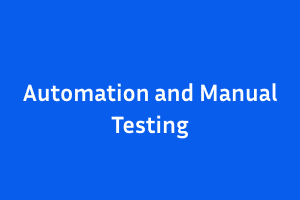In the world of software development, quality assurance is a really important aspect of SDLC. Testing is an integral part of the software development lifecycle, ensuring that applications are free from bugs, function as intended, and provide a seamless user experience. When it comes to testing, two primary approaches are widely used: automation testing and manual testing. Each method has its strengths and weaknesses, and choosing the right one depends on various factors. In this blog post, we’ll delve into the differences between automation testing and manual testing, explore their pros and cons, and discuss how they can complement each other in a balanced testing strategy.
Automation Testing
Automation testing involves the use of testing tools and scripts to perform test cases, validate functionality, and compare expected outcomes with actual results. It is especially effective for repetitive and regression testing. Here are some key advantages and considerations of automation testing:
Advantages:
- Automation allows faster execution of test cases. It is ideal for projects with frequent releases or continuous integration.
- Test scripts can be reused across different test cycles and projects, reducing testing effort and ensuring consistency.
- Automated tests follow predefined scripts precisely, eliminating the risk of human errors in repetitive tasks.
- Multiple test cases can be executed simultaneously, saving time and resources.
- Automated tests excel at identifying regressions when new code changes are introduced.
Considerations:
- Initial Setup: Setting up automation frameworks and writing test scripts can be time-consuming.
- Maintenance: Automated tests require regular updates to adapt to changes in the application’s functionality.
- Not Suitable for UI Changes: Automated tests may break if there are frequent user interface changes.
- Limited Exploratory Testing: Automation is less effective at exploring uncharted areas of an application.
Manual Testing
Manual testing relies on human testers who interact with the software, following predefined test cases, and reporting any issues they encounter. It is highly adaptable and ideal for exploratory testing. Here are some key advantages and considerations of manual testing:
Advantages:
- Manual testers can quickly adapt to changes in requirements or user interface designs.
- Human testers can explore the application’s functionality, making it suitable for identifying unforeseen issues.
- Manual testing is essential for evaluating the user experience, including usability and user interface design.
- Cost-Effective for Small Projects: Manual testing can be more cost-effective for smaller projects with limited testing needs.
Considerations:
- Slower Execution: Manual testing is time-consuming, making it less suitable for projects with tight release schedules.
- Human Error: Testers can make mistakes, leading to inconsistent test results.
- Resource-Intensive: Requires a dedicated team of testers.
If you have skills in PHP programming and you want to enhance your career in this field, a PHP certification from StudySection can help you reach your desired goals. Both beginner level and expert level PHP Certification Exams are offered by StudySection along with other programming certification exams.




